
Today’s #MovieScientist posts look at the lonely, often isolated nature of scientific work. The movies below examine movie scientists who work alone, or as part of a small, secluded team.
Participants: Thank you for your research, observations and hard work over these past three days. We were so impressed by your selection of films and what you wrote about these films.
Readers: Thank you for leaving encouraging and insightful comments about science – and about films in general.
Also, a special thank you to Christina Wehner for being a wonderful co-host.

The Love Pirate explains why movie scientists are often “at odds” with society in Contact (1997).

Cinematic Scribblings studies the effects of isolation and never-ending sand in Woman in the Dunes (1964).

Sometimes they go to Eleven analyzes the surreal threat facing the crew on the spaceship Ikarie XB-1 (1963).
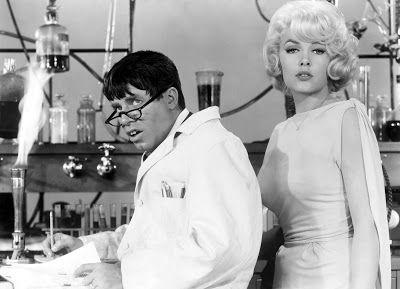
Old Hollywood Films dishes on Julius Kelp and Buddy Love in Jerry Lewis’ The Nutty Professor (1963).
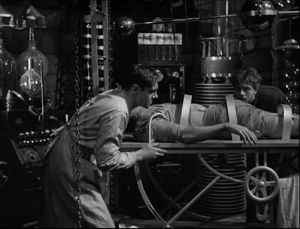
Co-host Christina Wehner asks some of life’s bigger philosophical questions with the Frankenstein movies (1931, 1957, 2015).

Film Music Central looks at a crazed Bluebeard-esque character in Ex Machina (2015).
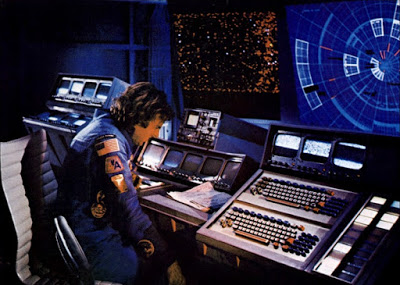
TFK’s Web of Horror and Science Fiction wonders if humanity can coexist peacefully with nature in Silent Running (1972).

The Midnite Drive-In scrutinzes Charlton Heston as the last man on earth in The Omega Man (1971).
But wait – there’s more! We have a few more MAD scientists to add to our Hall of Movie Science Fame:

Phyllis Loves Classic Movies solves a glowing mystery with the dark comedy Murder, He Says (1945).

Laini Giles analyzes John Barrymore’s mesmerizing performance in Dr. Jekyll and Mr. Hyde (1920).
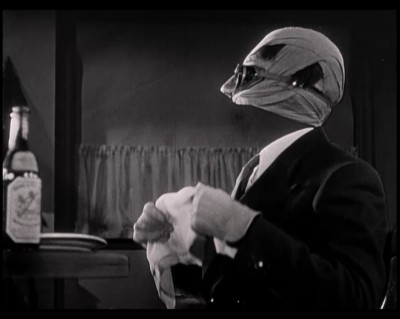
Second Sight Cinema has published a viewer’s guide on How to Watch The Invisible Man (1933).
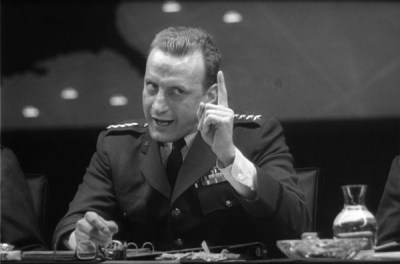
Film Ruminations blasts off with Dr Strangelove or: How I learned to Stop Worrying and Love the Bomb
Dr. Strangelove or: How I Learned to Stop Worrying and Love the Bomb
Don’t change that dial! We’re honouring more GOOD scientists:

The Cinematic Frontier travels 80,000 years in the future in The Time Machine (1960).

Moon in Gemini proves giant ants are no match for a female scientist in Them! (1954).
In case you missed it:
























And thank you!! It has been a delight co-host this with you!
LikeLiked by 1 person
Reblogged this on Christina Wehner and commented:
My co-host has said it best, but I want to add my thanks to everyone involved for making this event such a success! I have learned a tremendous amount and my list of movies to watch as grown exponentially. 🙂
And thanks so much to Silver Screenings, with whom it was a delight to co-host!
LikeLiked by 1 person
SILENT RUNNING is a quiet, intriguing sci fi/ecological film. Plus, who can forget Huey, Dewey, and Louie (hope I spelled their names correctly)?
LikeLiked by 1 person
A lot of people speak highly of this film. It’s always wonderful, in a blogathon, to learn about new films AND to see how many bloggers rave about it. Silent Running is one of those films.
LikeLike
That’s something for me! Thanks for many interesting movie ideas in this series! 🙂
LikeLiked by 1 person
I hope you find some new favorites. 🙂
LikeLiked by 1 person
I’m sure about it!
LikeLike
Wow, Ruth! This is some collection! From serious to silly, there’s a film for just about any taste.
LikeLiked by 1 person
You’re absolutely right! Something for everyone at the Movie Scientist Blogathon. 🙂
LikeLike
I really enjoyed the posts I read in this series. Such a great idea for a theme. Thanks so much!
LikeLiked by 1 person
Yes, there was such a wide variety of topics. So many movies I haven’t seen yet.
LikeLike